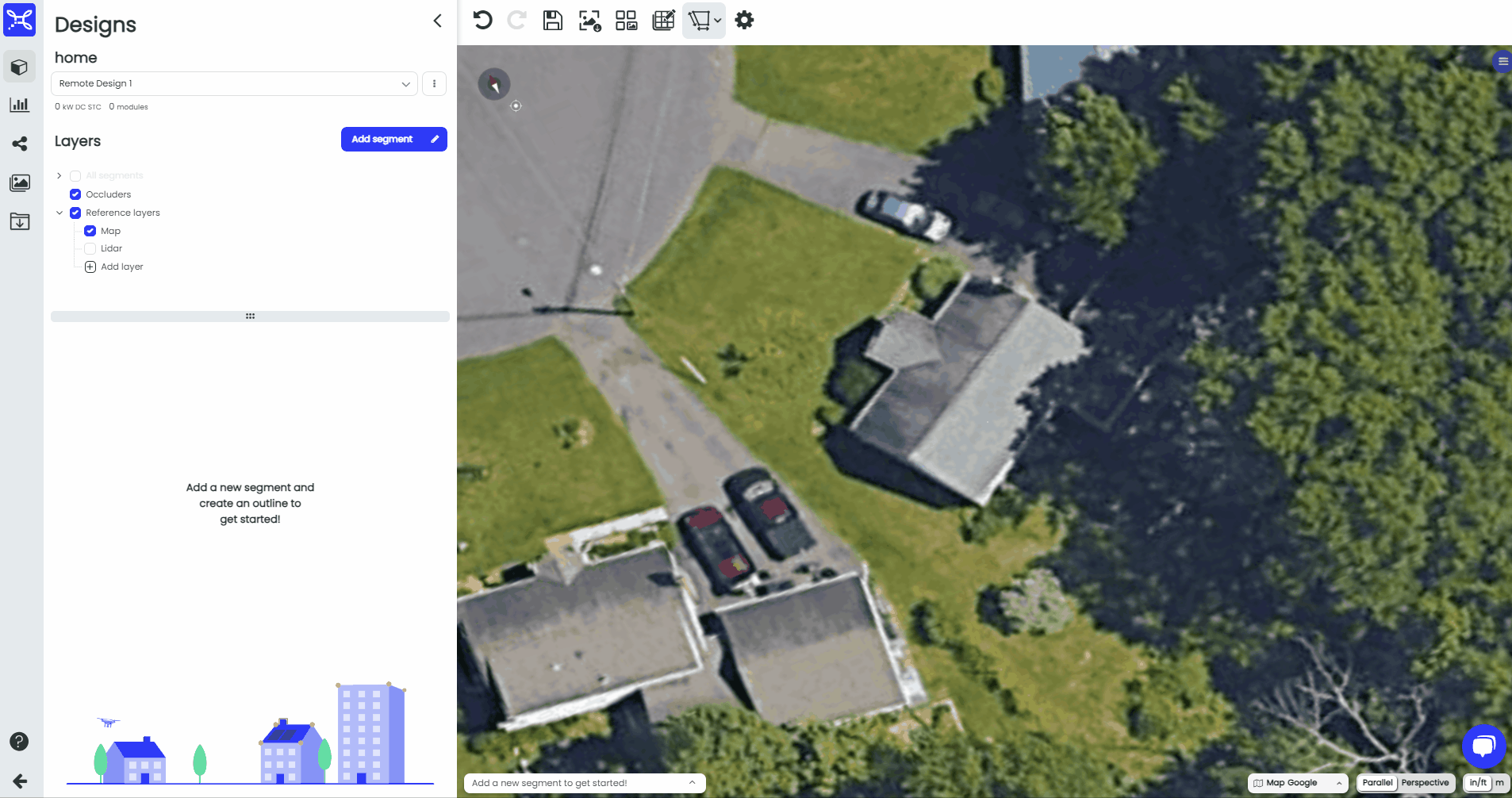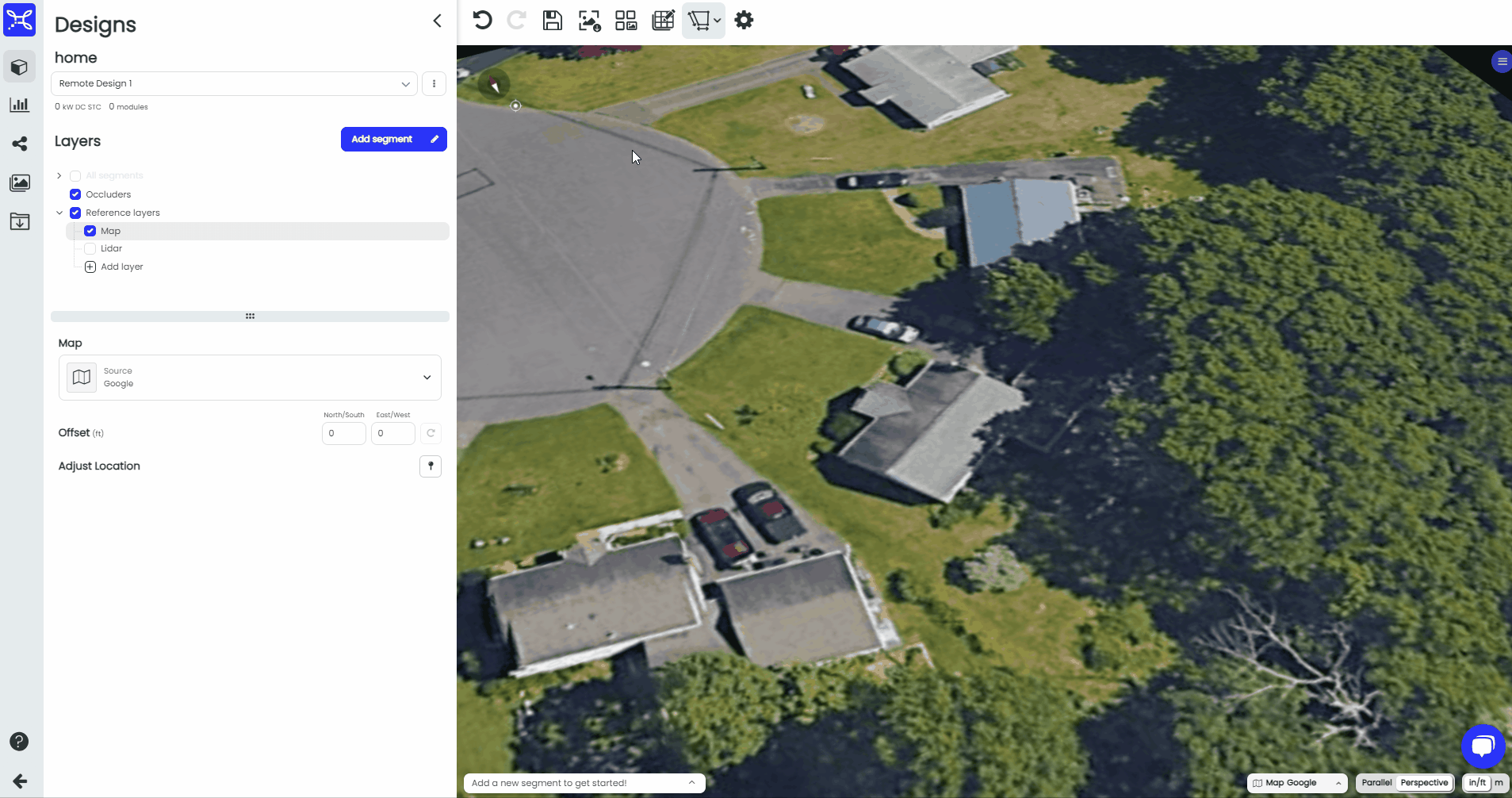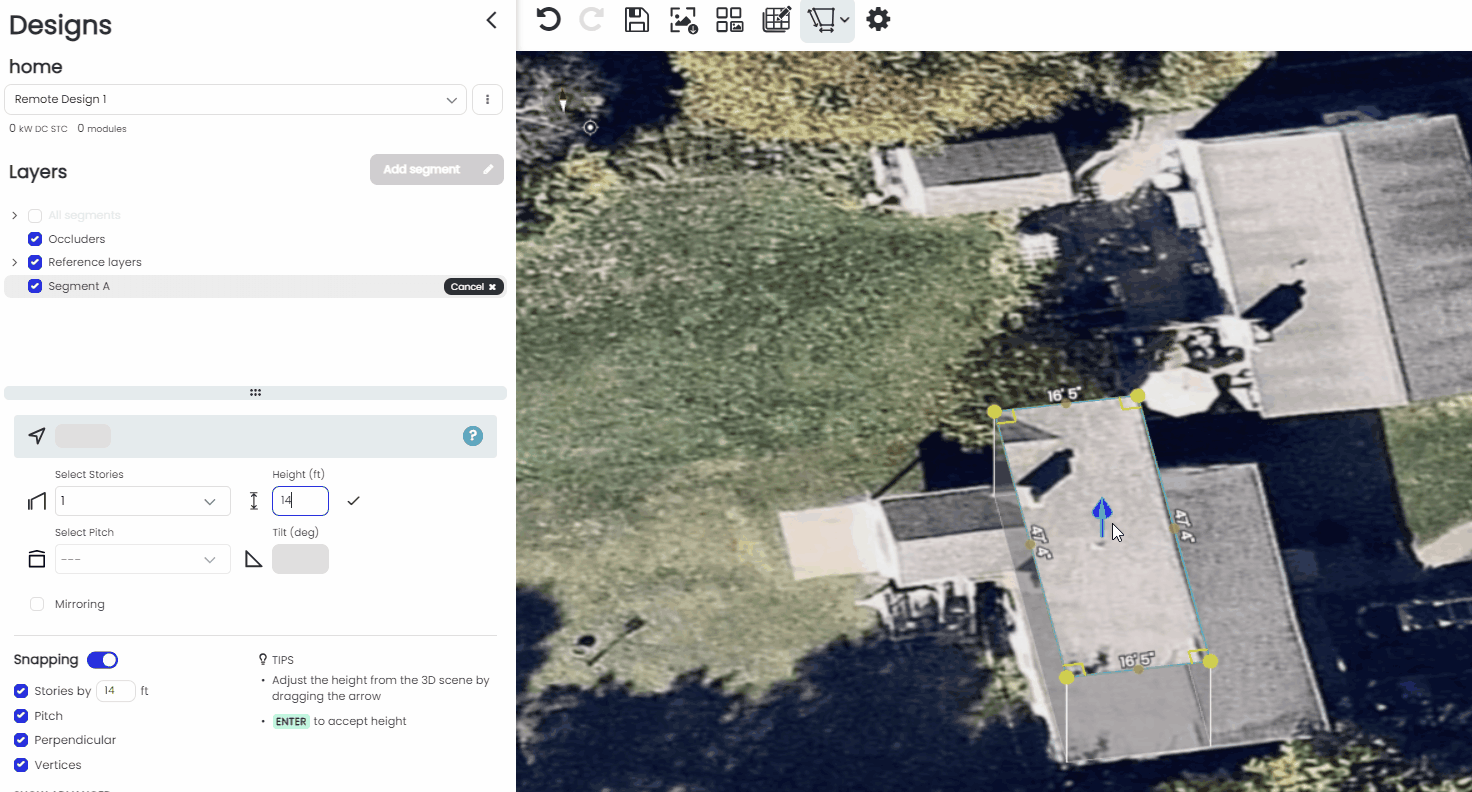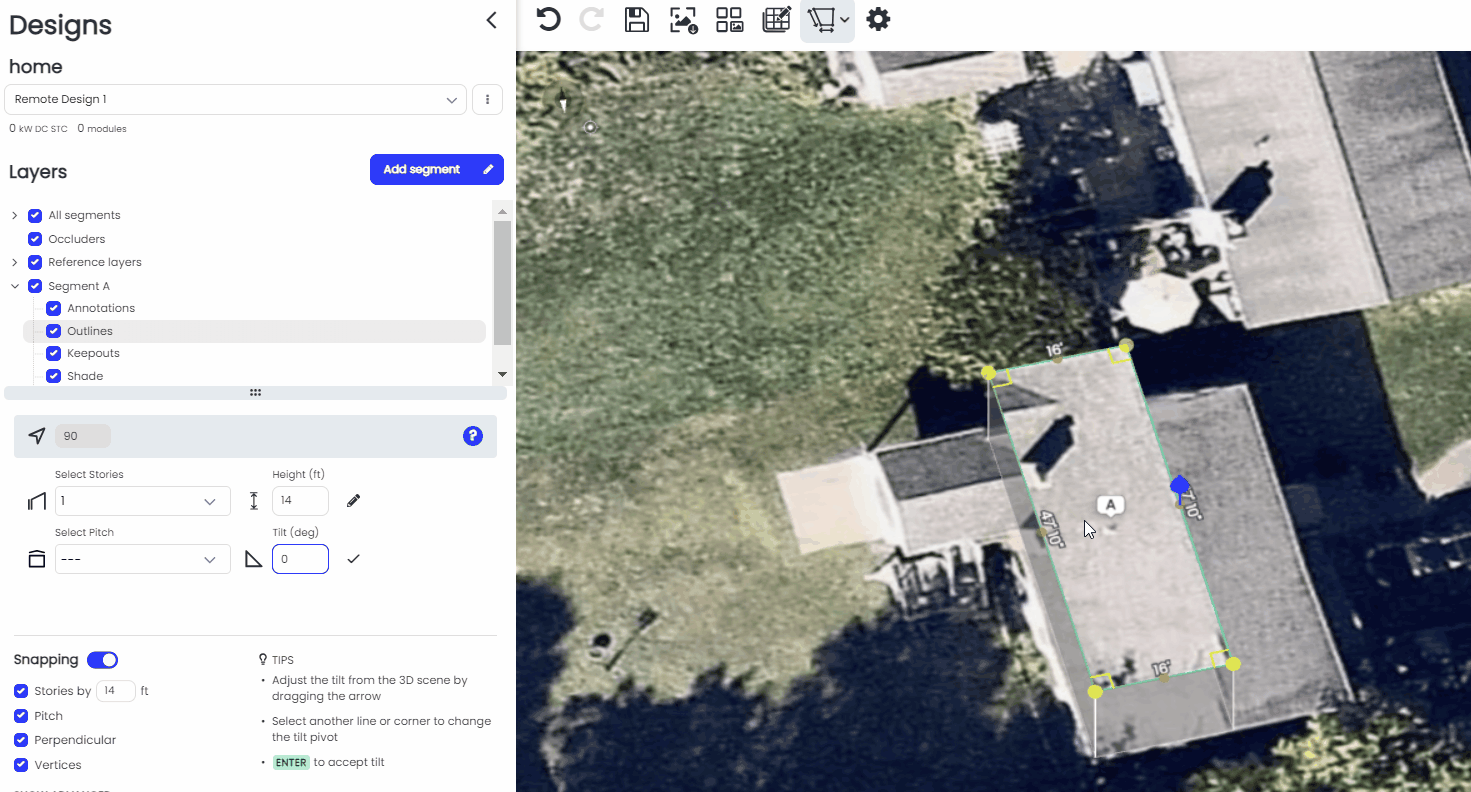Creating Outlines for Remote Design
Check out our assortment of Outlining tools, from basic to complex.
What is the purpose of the roof outline?
The goal with using roof outlines is to trace the roof surface that you would like to put solar modules on. This will involve tracing the roof surface on the satellite layer and then adjusting the height and pitch of that roof outline.
Basic Roof Segment Outlining
-
To get a top-down view of the subject, click on the Compass icon located at the top left of the 3D space.
-
Make sure to use a Map layer that has clear visuals and minimal skew. This will allow you to get the most accurate measurements.
-
When you're ready to start outlining the roof, simply click on the blue "Add segment" button.
- Left click to outline the roof segment on the map image. When you have completed the segment, follow the steps in the Adjustments section below

Mirroring is a helpful feature when dealing with two roofs that are similar, facing opposite directions, and connected by a ridge. Once you have finished connecting the mirrored segment, you can then adjust the height and pitch of both sides at the same time.

Adjustments
Height
Adjust the height of a completed outline by dragging the blue arrow over the segment and pressing the Enter key when the correct height is reached. You can also change the height by story if you know the height of each floor.
The height you choose for the segment will be the height of the lowest point of the roof.
Pitch
Once the height is confirmed, select the highest side or point of the segment and drag the blue arrow until you reach the correct pitch and press enter.- As you drag the blue arrow, the roof pitches will snap by default to 0-12/12
- If you have a specific numbered tilt you would like to use, you can type it into the Tilt field.

LiDAR
Using LiDAR, which can be found in the "Reference layers" menu, is a fantastic way to verify the dimensions of a house. Here are some best practices for incorporating LiDAR into your project:
- When you first open your project, it may take a little while for the LiDAR to load. To save time, complete one or two segments before turning it on.
- Once the LiDAR is activated, make adjustments so that it aligns with the correct height based on the map layer and is properly positioned with your main subject.
- After aligning the LiDAR it is recommended to adjust it's opacity or turn it off while adding your segments, so that it does not get in the way visually.
- Once you have completed all the roof segments, make any necessary adjustments to match it with the LiDAR.
.gif?width=606&height=292&name=LiDar%20(1).gif)
Snapping
There are several options available for snapping while you are drawing, adjusting the height, and adjusting the pitch of the roof segment. By default, many of these options are turned on. However, if you prefer to turn them off, you can simply hold the shift key while performing your usual actions. Alternatively, you can also permanently toggle them off by clicking on the slider located next to the Snapping menu title.
Basic snaps:
- Stories - When adjusting the height of the segment, you can turn on/off whether you want snaps for each story. The default story height is 14 ft, but can be customized
- Pitch - When dragging the arrow to select segment pitch, it will snap to 0-12/12 by default, but can be turned off.
- Perpendicular and vertices - these snaps occur while outlining, and help you keep your segments nice and square. The symbols for these snaps are covered in more detail in our Creating Outlines article for drone-based models.